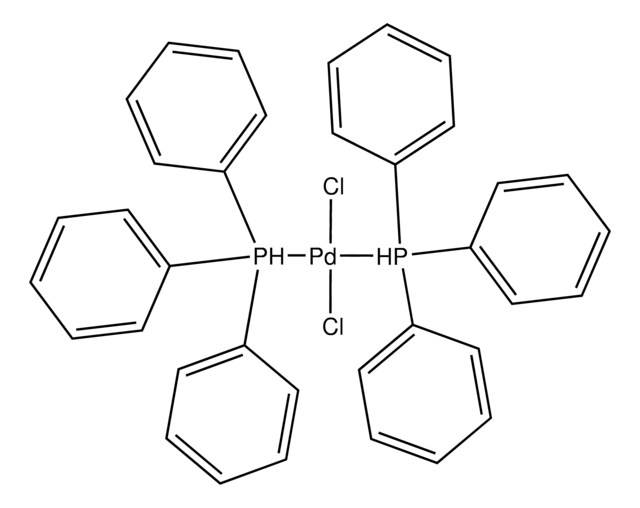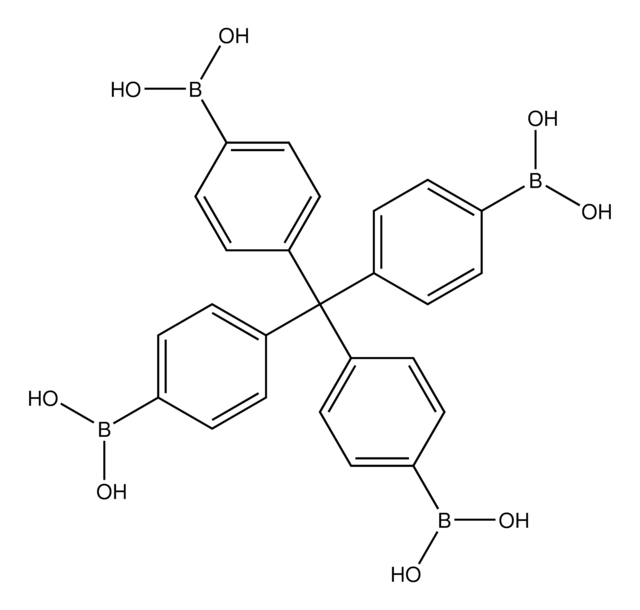417130
Benzene-1,4-diboronic acid
≥95.0%
Synonyme(s) :
p-Phenylenediboronic acid, 1,4-Phenylenebisboronic acid, 1,4-Phenylenediboronic acid, p-Benzenediboronic acid, Benzene-1,4-diboronic acid, NSC 25410
About This Item
Produits recommandés
Essai
≥95.0%
Forme
powder
Pf
>350 °C (lit.)
Chaîne SMILES
OB(O)c1ccc(cc1)B(O)O
InChI
1S/C6H8B2O4/c9-7(10)5-1-2-6(4-3-5)8(11)12/h1-4,9-12H
Clé InChI
BODYVHJTUHHINQ-UHFFFAOYSA-N
Vous recherchez des produits similaires ? Visite Guide de comparaison des produits
Catégories apparentées
Application
- Externally initiated Kumada catalyst-transfer polycondensation
- Suzuki-Miyaura cross-coupling reactions
- Energy transfer processes in optoelectronic devices
- Palladium-catalyzed sequential alkenylation and conjugate addition reactions
- Scholl cyclizations
Reagent used in Preparation of
- Crosslinkers and cross-linked core-shell nanoparticles by RAFT polymerization and palladium-catalyzed Suzuki coupling reaction
- Fluorescence and solution-processable coordination polymers
- Cyclotricatechylene based porous crystalline material for gas storage
- Indolizine derivatives as OLEDs
- Helically p-stacked thiophene-based copolymers with circularly polarized fluorescence
- Novel organic semiconductors and applications in organic thin-film transistors
- Highly twisted polycyclic aromatic hydrocarbons with unexptected reactivity
Autres remarques
Mention d'avertissement
Warning
Mentions de danger
Conseils de prudence
Classification des risques
Acute Tox. 4 Oral
Code de la classe de stockage
11 - Combustible Solids
Classe de danger pour l'eau (WGK)
WGK 3
Point d'éclair (°F)
Not applicable
Point d'éclair (°C)
Not applicable
Équipement de protection individuelle
dust mask type N95 (US), Eyeshields, Gloves
Faites votre choix parmi les versions les plus récentes :
Déjà en possession de ce produit ?
Retrouvez la documentation relative aux produits que vous avez récemment achetés dans la Bibliothèque de documents.
Les clients ont également consulté
Articles
Professor Aran discusses engineering graphene-based materials through careful functionalization, enabling diverse applications.
Professor Aran discusses engineering graphene-based materials through careful functionalization, enabling diverse applications.
Professor Aran discusses engineering graphene-based materials through careful functionalization, enabling diverse applications.
Professor Aran discusses engineering graphene-based materials through careful functionalization, enabling diverse applications.
Notre équipe de scientifiques dispose d'une expérience dans tous les secteurs de la recherche, notamment en sciences de la vie, science des matériaux, synthèse chimique, chromatographie, analyse et dans de nombreux autres domaines..
Contacter notre Service technique










